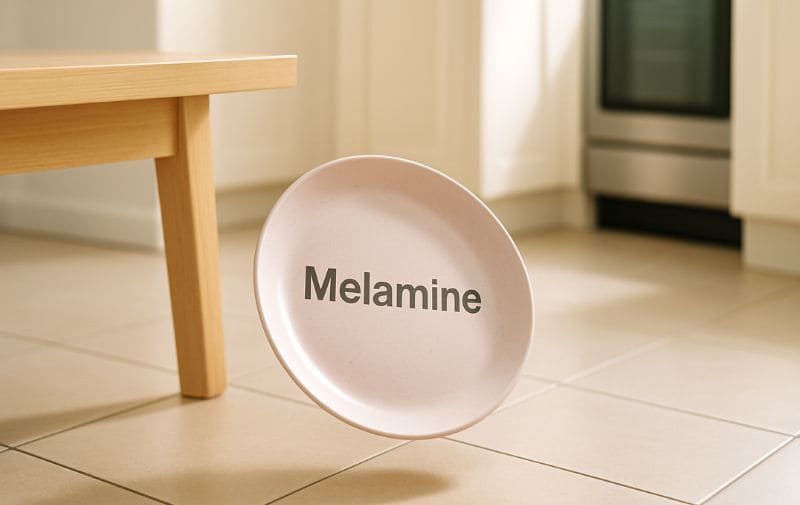Melamine plates are widely popular for their durability and stylish designs, often marketed as “unbreakable” or “shatterproof.” But just how invincible are they when faced with the drops, knocks, and tumbles of everyday life? The truth is, while melamine is incredibly break-resistant, it’s not entirely unbreakable.
Let’s dive into what makes melamine so tough, how it compares to other materials, and what it really takes to damage these workhorse plates.
Last Updated: May 2025 | Estimated Reading Time: 9 minutes。
So, Can Melamine Plates Actually Break, or Are They Invincible?
The key distinction is shatter-resistant, not absolutely shatterproof or unbreakable. If you drop a high-quality A5 melamine plate from a typical table height onto a common kitchen floor (like wood, linoleum, or even most tiles), it will most likely bounce or land with a dull thud and remain perfectly intact. Try that with a standard ceramic or glass plate, and you’ll probably be reaching for a dustpan and brush. However, under extreme conditions or with significant force, yes, even a robust melamine plate can sustain damage.
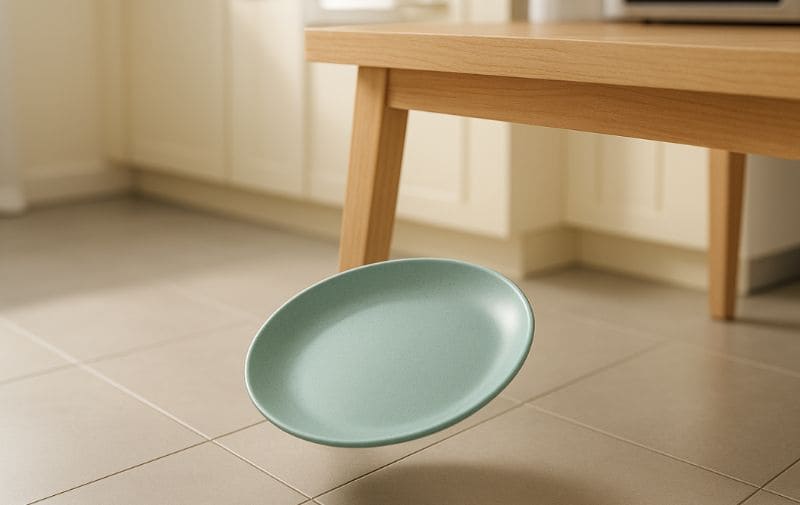
What does “shatter-resistant” truly mean when it comes to melamine?
Shatter-resistant means it’s designed to withstand accidental impacts without breaking into many small, sharp pieces. When melamine does eventually fail under extreme stress, it tends to crack or have a larger piece break off, rather than exploding into countless hazardous shards like glass. This is a significant safety advantage, especially in environments with children, pets, or for outdoor use.
How does the typical breakability of melamine compare to ceramic or glass plates?
There’s a night-and-day difference in typical scenarios:
| Feature | Melamine Dinnerware (High-Quality A5) | Ceramic Dinnerware | Glass Dinnerware |
|---|---|---|---|
| Drop from Table | Usually survives, may bounce | Often breaks or shatters | Often breaks or shatters |
| Impact Resistance | High | Low to Moderate | Low |
| Failure Mode | Cracks, chips, piece breaks off | Shatters, sharp fragments | Shatters, very sharp fragments |
| Child-Friendly | Excellent | Poor | Very Poor |
| Outdoor Use | Excellent | Risky | Very Risky |
What Makes Melamine More Resistant to Breaking Than Traditional Dinnerware?
The impressive durability of melamine isn’t accidental; it’s down to its material properties and manufacturing.
Is it the inherent properties of the melamine resin itself?
Yes, the melamine resin (specifically melamine-formaldehyde resin for A5 grade) is inherently strong and hard, yet it possesses a degree of flexibility that allows it to absorb impact energy. This combination makes it much more resilient to sudden shocks than brittle materials like ceramic or glass, which can’t dissipate impact energy as effectively and thus fracture.
Does the manufacturing process contribute to its overall toughness?
Indeed. High-quality A5 melamine products are compression molded under high heat and pressure. This process creates a dense, non-porous, and very robust final product. The curing process ensures the resin forms strong chemical bonds, contributing to its overall strength and break resistance.
- Quality of Melamine (A5 is Superior): This is paramount. 100% A5 melamine resin offers the best balance of hardness, rigidity, and impact resistance. Lower grades (A1, A3) or melamine mixed with excessive fillers will be more brittle and significantly more prone to breaking and chipping. This is a non-negotiable for true durability.
- Thickness and Design Play a Role: Generally, thicker melamine plates are more robust. At Duramela, we also consider design elements; for instance, plates with very thin or delicate rims might be more susceptible to chipping than those with a more substantial, rounded edge.
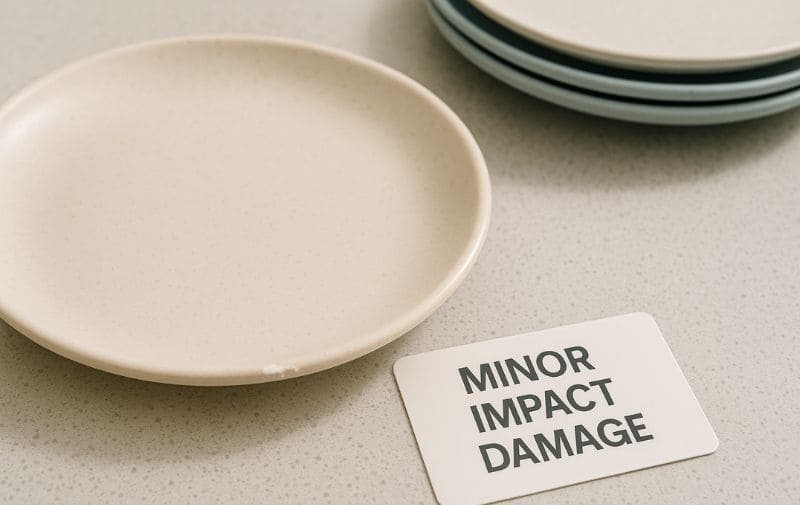
If a Melamine Plate Does Break, What Does That Usually Look Like?
This is where melamine truly shines from a safety perspective compared to traditional dinnerware.
Do they shatter into many sharp, dangerous shards?
Generally, no. As mentioned, melamine typically does not shatter into countless small, sharp, dangerous fragments like glass or some ceramics do. This significantly reduces the risk of cuts and injuries if a break does occur.
Is it more common for melamine to chip, crack, or have a piece break off?
Yes. Chipping is the most frequent type of damage you might see with melamine, especially after prolonged heavy use or accidental hard knocks against unyielding surfaces like a granite countertop edge or a metal sink. Cracking or having a larger piece break off is less common and usually requires more significant force. High-quality A5 melamine with a good, solid edge design is more resistant to chipping.
What Kind of Force or Mishandling Can Cause a Melamine Plate to Break or Chip?
While tough, melamine has its limits. To actually break or significantly damage a melamine plate usually requires considerable force or specific types of mishandling:
- A very hard impact from a considerable height onto a very hard, unyielding surface (e.g., dropping it from a second-story balcony onto concrete).
- Extreme, intentional bending or flexing (though quality A5 melamine is quite rigid and will resist this strongly).
- Repeated, severe impacts in the same spot over time can weaken the material.
- Degradation from misuse: Crucially, repeated microwaving (which should NEVER be done) weakens the melamine structure significantly, making it brittle and much more prone to cracking and breaking even under normal stress.
Can a hard drop onto a concrete floor break melamine?
Yes, it’s possible. While it might survive some drops onto concrete, a particularly hard impact, especially if it lands on an edge or from a significant height, could cause a high-quality A5 melamine plate to crack or chip. However, it’s still far more likely to survive such an incident than a ceramic plate.
Are sharp impacts or extreme bending more likely to cause damage?
Sharp, concentrated impacts (like hitting it hard with a hammer – not a typical use case!) or attempting to bend it with a lot of force are more likely to cause failure than a general drop.
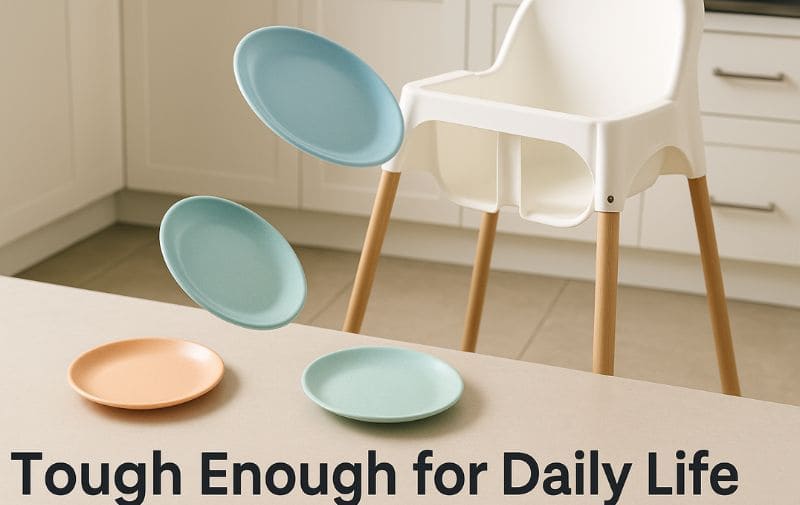
Do Factors Like Age or Temperature Affect Melamine’s Break Resistance?
These can play a minor role over the very long term.
Can melamine become more brittle and prone to cracking over extended use?
Over many years of heavy use, countless dishwasher cycles (even when done correctly), and exposure to temperature fluctuations, melamine can very gradually lose some of its original resilience and become slightly more prone to chipping. However, this is a slow process for high-quality A5 melamine. Misuse (like microwaving or using abrasive cleaners) will accelerate this significantly.
Does exposure to very hot or cold temperatures (not microwave) impact its strength?
Melamine is designed to handle typical food serving temperatures, from cold salads to hot soups (generally up to 160-170°F or 70-77°C for A5 grade).
- Extreme Cold: Freezing melamine isn’t typically recommended as it could make it temporarily more brittle.
- Extreme Heat (Not Microwave): Sustained exposure to temperatures above its recommended limit (e.g., placing it in a conventional oven or under a broiler) will damage it and compromise its strength. Again, microwaving is the biggest culprit for heat-related degradation leading to brittleness.

Are All Melamine Plates Created Equal in Terms of Durability and Break Resistance? {#melamine-quality-durability}
Absolutely not! This is a critical point.
- 100% A5 Melamine: This is the gold standard for food-grade dinnerware. It offers the highest durability, best heat resistance (for serving, not microwaving), and best resistance to chipping and breaking.
- Lower Grades (A1, A3) or Fillers: Plates made from lower-grade melamine or those with a high percentage of fillers (like urea) will be significantly more brittle, prone to chipping and cracking, and may not withstand dishwashing as well. When you invest in reputable brands like Duramela that specify 100% A5 melamine, you’re getting a product designed for superior break resistance.
Comparing Break Resistance: Melamine vs. Other “Unbreakable” Options
| Material | Break Resistance Factor | Typical Failure Mode if Extreme Force Applied | Feels Like |
|---|---|---|---|
| High-Quality A5 Melamine | Highly Shatter-Resistant | Cracks, chips, piece breaks off | Rigid, substantial, ceramic-like |
| Corelle (Vitreous Glass) | Very Shatter-Resistant | Can shatter dramatically into many pieces | Lightweight glass |
| Polycarbonate Plastic | Extremely Break-Resistant (often flexible) | May dent, scratch, eventually crack | Clearly plastic, can be flexible |
| Other Food-Safe Plastics | Varies widely by type | Varies (dent, crack, shatter) | Varies |
| Melamine often hits a “sweet spot” by offering excellent break resistance combined with a more rigid, ceramic-like feel and weight that many users prefer over more obviously “plastic” alternatives. |
How Can You Best Care for Melamine Plates to Minimize Chips and Cracks?
While robust, a little care goes a long way:
- Avoid Abrasive Cleaners/Scrubbers: These can scratch the surface, and over time, micro-scratches could become potential stress points.
- Proper Dishwasher Use: Top rack, avoid sanitize cycles or heated dry if possible. (Refer to our [Melamine & Dishwasher Guide]([Link to your dishwasher guide if you have one])).
- No Microwave – Ever! This is the fastest way to weaken melamine and make it brittle.
- Avoid Using as Cutting Boards: Sharp knives can score the surface.
- Handle with Reasonable Care: Don’t intentionally throw them or subject them to extreme impacts.
Setting Expectations: Is “Unbreakable” a Fair Term for Melamine Dinnerware?
While “unbreakable” is a catchy marketing term, “highly break-resistant” is a more accurate and honest description for melamine. For most everyday accidents – a slip from the hand, a knock off the table – high-quality A5 melamine plates will emerge unscathed where traditional ceramic or glass would be in pieces. This remarkable durability is why melamine is a top choice for:
- Families with Young Children: Minimizes costly replacements and, more importantly, reduces injury risk.
- Outdoor Dining: Picnics, BBQs, camping, boating – where drops are more likely.
- Commercial Settings: Restaurants, schools, hospitals, and cafeterias see significant cost savings due to drastically reduced breakage compared to chinaware. So, while you shouldn’t test its limits with a sledgehammer, you can confidently rely on your A5 melamine dinnerware to withstand the rigors of daily life far better than most alternatives.
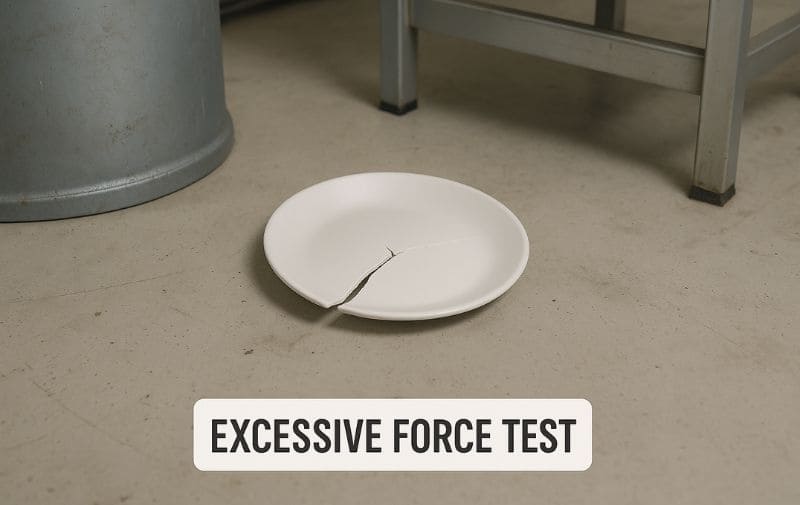
Recommended Knowledge:

